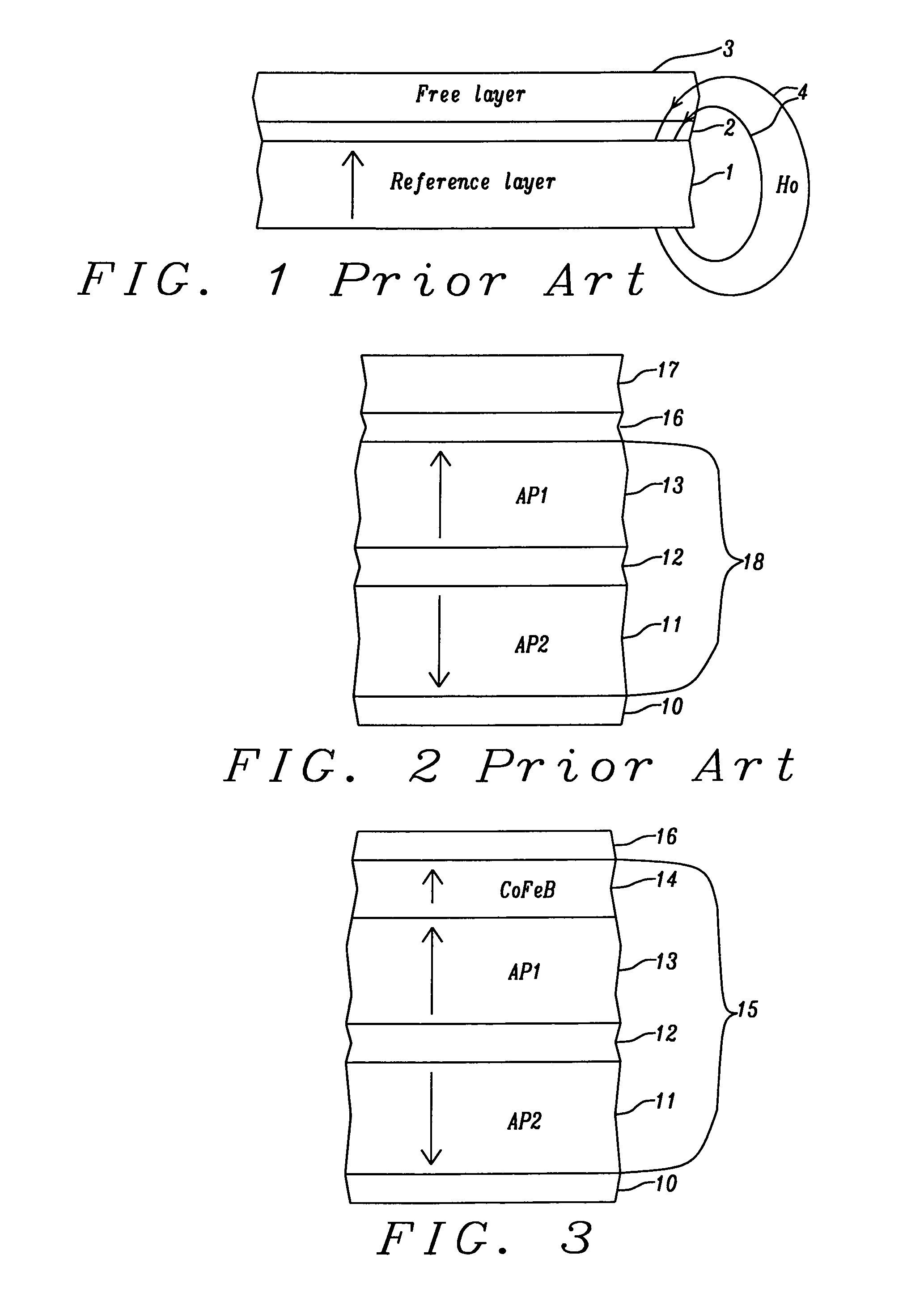Minimal thickness synthetic antiferromagnetic (SAF) structure with perpendicular magnetic anisotropy for STT-MRAM
a synthetic antiferromagnetic and perpendicular magnetic anisotropy technology, applied in the field of magnetoresistive random access memory (mram), can solve the problems of undesirable asymmetry, difficult to achieve ho=0 in practice, and difficult to use external magnetic fields generated by current carrying lines to switch the magnetic moment direction. to achieve the effect of enhancing the tmr ratio in the mtj
- Summary
- Abstract
- Description
- Claims
- Application Information
AI Technical Summary
Benefits of technology
Problems solved by technology
Method used
Image
Examples
example 1
[0051]To further describe the effect of AP2 layer thickness on SAF reference layer properties with regard to the second embodiment that has an AP2 / Co / Ru / Co / CoFeB configuration, a MTJ stack was fabricated with the following bottom spin valve configuration where the number following the layer indicates the layer thickness: TaN20 / Mg7 / NiCr50 / (Cu2.5 / Ni6)10 / Co4 / Ru4 / Co4 / Co20Fe60B2010 / MgO(8 / 4ROX) / Co20Fe60B203 / Ta20 / Ru50. In this case, TaN / Mg / NiCr is the seed layer and Ta / Ru serves as a cap layer. The MgO tunnel barrier is made by first depositing an 8 Angstrom thick Mg layer, followed by an ROX process, and then depositing a second Mg layer that is 4 Angstroms thick. Ho is measured to be −190 Oe and the Mst balance ratio=0.40. If the number of laminates “n” in the (Co / Ni)n AP2 stack is reduced from 10 to 6, then Ho=0 and the balance ratio=0.66. When n is lowered to 4, then Ho=125 Oe and the balance ratio=0.99.
[0052]Referring to FIG. 11, the viability of a SAF reference layer according to the...
PUM
 Login to View More
Login to View More Abstract
Description
Claims
Application Information
 Login to View More
Login to View More - R&D
- Intellectual Property
- Life Sciences
- Materials
- Tech Scout
- Unparalleled Data Quality
- Higher Quality Content
- 60% Fewer Hallucinations
Browse by: Latest US Patents, China's latest patents, Technical Efficacy Thesaurus, Application Domain, Technology Topic, Popular Technical Reports.
© 2025 PatSnap. All rights reserved.Legal|Privacy policy|Modern Slavery Act Transparency Statement|Sitemap|About US| Contact US: help@patsnap.com



